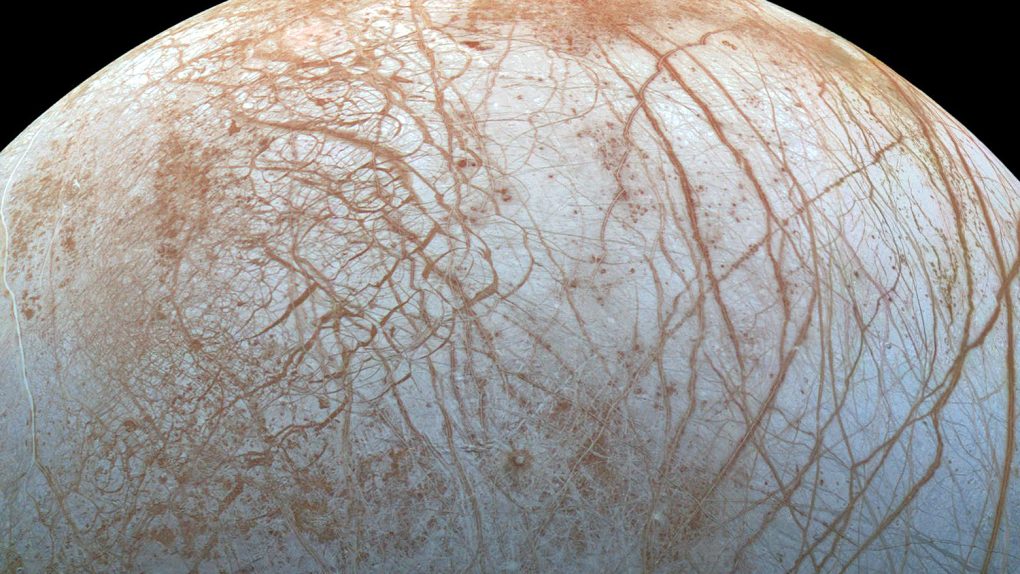- Europa, a moon of Jupiter, is one of the few places in our solar system where we might be able to find life.
- New research focused on the water plumes that spew from its surface and attempted to explain them.
- A theory suggests that the plumes are water that was trapped in ice bubbles after impacts from asteroids or comets.
Of all the worlds in our solar system, Jupiter’s frosty moon Europa is one of the most interesting in terms of the hunt for life. Researchers once thought it was just a frozen ball of ice, but more recent observations and missions to its host planet Jupiter have revealed the moon has reserves of liquid water, and it’s possible that that water provides everything that life needs to exist on the distant moon.
Our first hints that water exists within the icy moon came in the form of cones of ice particles spotted near large fissures in its surface. This indicates that liquid water is spewing out into space, and that something within the moon is keeping that water warm. Now, researchers have proposed an explanation as to why this water is shot out into space on such a regular basis.
The most obvious explanation is that Europa has a huge subsurface ocean that is hidden beneath a thick outer layer of ice. If the water from that ocean is being shot out into space, and if life exists in the ocean below, researchers are desperate to know whether a mission that samples that ejected water could reveal the presence of life.
“Understanding where these water plumes are coming from is very important for knowing whether future Europa explorers could have a chance to actually detect life from space without probing Europa’s ocean,” Gregor Steinbrügge, lead author of the research, said in a statement. The study was published in Geophysical Research Letters.
The researchers suggest that while Europa may indeed host a life-sustaining ocean beneath its surface, some or perhaps all of the water spewing from its surface may be the result of ancient impacts from smaller bodies. The idea being that a strike from an asteroid or comet could temporarily melt the ice in a localized area. That water would freeze over, creating a water bubble beneath the ice which, over the course of millions of years, eventually begins to cool, cause a fissure, and erupt in a jet of water being shot into space.
“The comet or asteroid hitting the ice shell was basically a big experiment which we’re using to construct hypotheses to test,” Don Blankenship, co-author of the research, said in a statement. “The polar and planetary sciences team at UTIG are all currently dedicated to evaluating the ability of this instrument to test those hypotheses.”








